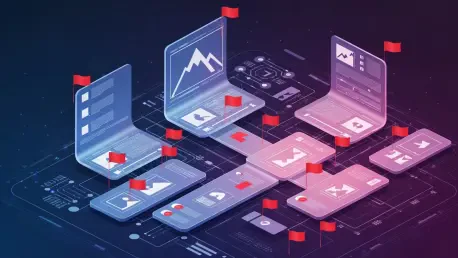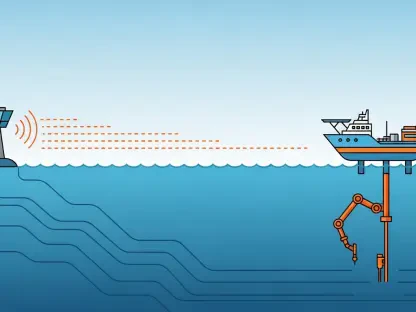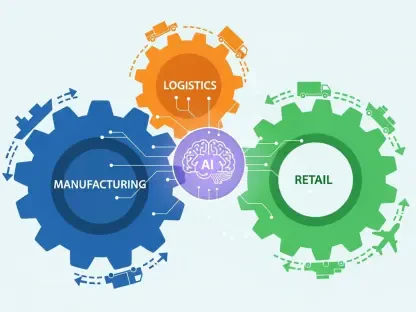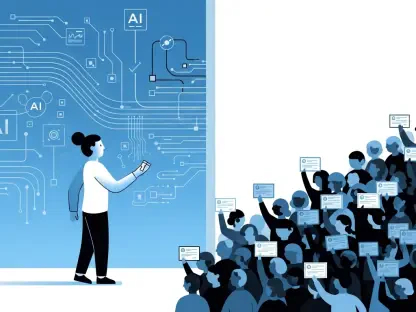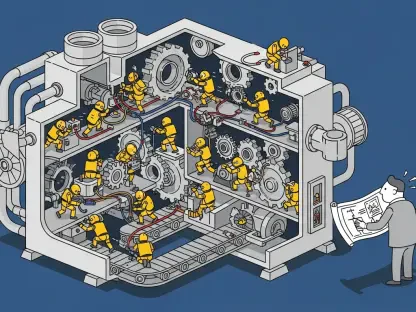In a world saturated with digital content, a staggering statistic emerges: nearly half of Australians have recently turned to AI tools to craft everything from essays to artwork, raising the question of what happens when these creations are so convincing that distinguishing human from machine becomes nearly impossible. This hidden hand of artificial intelligence shapes narratives, influences decisions, and sometimes deceives, leaving trust hanging in the balance. Diving into the realm of AI detection tools, this feature explores how these technologies attempt to unmask machine-generated content and whether they truly stand a chance against the relentless pace of AI innovation.
Why Detecting AI Is a Critical Challenge
The rise of AI-generated content has reshaped how information is created and consumed, permeating academic, professional, and personal spheres. With tools capable of producing polished reports or lifelike images in seconds, the potential for misuse looms large. Consider the fallout from a consultancy firm forced to refund the Australian government over errors in an AI-drafted report, or a lawyer disciplined for submitting fabricated AI-generated citations. These incidents underscore a pressing need to identify AI’s influence, not only to safeguard integrity in high-stakes environments but also to combat misinformation that can spread like wildfire in everyday digital interactions.
Beyond isolated cases, the broader societal impact is profound. As students leverage AI for assignments, universities struggle to maintain academic honesty, while businesses face risks of trusting flawed automated outputs. The inability to reliably spot AI content threatens to erode confidence in what is read, seen, or heard online. This challenge sets the stage for a deeper look into the tools designed to tackle this issue, revealing both their promise and their pitfalls in a landscape where authenticity is increasingly elusive.
How AI Detection Tools Operate Under the Hood
AI detection tools aim to pierce the veil of machine-made content, employing varied techniques depending on the medium in question. For text, these systems often scrutinize linguistic patterns, such as repetitive phrasing or the overuse of certain terms like “delves,” which are telltale signs of AI authorship. By comparing these patterns against vast datasets of human and machine writing, detectors assign probability scores to flag potential AI involvement, though their precision often wavers when faced with nuanced or edited content.
In the realm of images, the approach shifts to technical analysis, with tools examining metadata for traces of AI generation or cross-referencing visuals against libraries of known deepfakes. Audio detection, meanwhile, hinges on identifying unnatural inflections or artifacts in sound waves, but simple tricks like overlaying background noise can easily fool these systems. Innovations such as watermarks—hidden identifiers embedded by creators like Google’s SynthID—offer a glimmer of hope, yet their effectiveness is often confined to specific platforms, leaving broader application out of reach for now.
The core struggle lies in the adaptability of AI itself. Content that undergoes post-generation edits or originates from lesser-known models frequently slips through the cracks, exposing a cat-and-mouse game between detection and deception. As these tools grapple with evolving algorithms, their mechanics reveal a complex battleground where no single method guarantees success across all formats.
The Verdict from Experts on Detection Reliability
Insights from technology specialists paint a sobering picture of AI detection capabilities. Studies consistently show that no tool achieves flawless accuracy, with false positives—human work misidentified as AI—and false negatives—AI content going undetected—remaining persistent issues. A prominent tech analyst recently remarked, “This is an arms race; detection always trails behind generation advancements,” highlighting the relentless pace at which AI creators outmaneuver safeguards.
These shortcomings carry real consequences, as evidenced by stories of students wrongly accused of cheating due to erroneous flags on their essays. Further complicating matters, many detection systems lack transparency, offering little explanation for their conclusions beyond vague confidence scores. This opacity fuels distrust among users who need clarity to make informed judgments, pointing to a critical gap in the technology’s current state.
Anecdotal evidence adds weight to expert concerns, with reports of individuals mistaking AI-crafted emails for genuine correspondence after detection tools failed to raise alarms. Such lapses emphasize the stakes involved, pushing for systems that not only improve precision but also communicate their reasoning in a way that builds confidence rather than skepticism.
Real-World Impacts of Detection Gaps
The limitations of AI detection tools ripple through various sectors, often with significant repercussions. In academic settings, the inability to accurately identify AI-assisted work has led to unfair accusations, damaging student reputations and straining institutional trust. One notable case involved a university investigation into a student’s paper, later proven to be original, after a detection tool incorrectly flagged it, illustrating the personal toll of technological error.
In professional environments, the risks escalate further. Businesses relying on AI-generated content for reports or marketing materials face potential embarrassment or financial loss if inaccuracies go undetected, as seen in the government refund incident tied to flawed AI outputs. The absence of reliable detection also opens the door to deliberate deception, where malicious actors can deploy convincing fakes to manipulate public opinion or extract sensitive information.
Even in personal contexts, the impact is tangible. Social media users, unaware of AI’s role in crafting viral images or messages, may amplify misinformation, contributing to broader societal confusion. These examples collectively reveal how gaps in detection technology extend beyond mere inconvenience, shaping outcomes in ways that demand urgent attention and improvement.
Navigating the AI Content Maze with Practical Strategies
While waiting for detection technology to mature, actionable steps can help individuals and organizations verify content authenticity. Combining automated tools with manual scrutiny offers a balanced approach—cross-checking text against original sources or inspecting images for subtle inconsistencies like unnatural shadows can uncover clues that machines miss. This hybrid method leverages human intuition to complement technological limits.
Building on trusted relationships serves as another vital tactic. Content from known, reputable sources carries a lower risk of deception, reducing reliance on detection tools in critical situations. Additionally, employing multiple detection platforms to cross-verify results can mitigate the weaknesses of any single system, as different tools excel in distinct areas of analysis.
Equipping oneself with knowledge of AI’s hallmarks also proves invaluable. Recognizing overly polished language in text or odd visual artifacts in media sharpens critical thinking, empowering users to question content independently. Though not foolproof, these strategies provide a practical framework for navigating a digital world where AI’s presence often hides in plain sight, fostering resilience against its unseen influence.
Reflecting on the Journey and Charting the Path Ahead
Looking back, the exploration of AI detection tools uncovered a landscape marked by innovation yet fraught with challenges. Their mechanisms, from pattern analysis to watermarking, strove to distinguish machine from human, but persistent errors and evolving AI tactics often left them a step behind. Real-world mishaps, from academic misjudgments to professional blunders, painted a vivid picture of the stakes involved, while expert voices echoed a collective call for greater reliability and transparency.
Moving forward, the focus shifts to actionable progress. Strengthening detection systems demands investment in diverse training data and interoperable standards that bridge platform divides. Simultaneously, public education on AI’s capabilities and risks emerges as a cornerstone, equipping society to question and verify content with a discerning eye. As the digital realm continues to evolve, blending advanced tools with human oversight stands out as the most promising path to preserve trust and authenticity in an era shaped by artificial intelligence.
